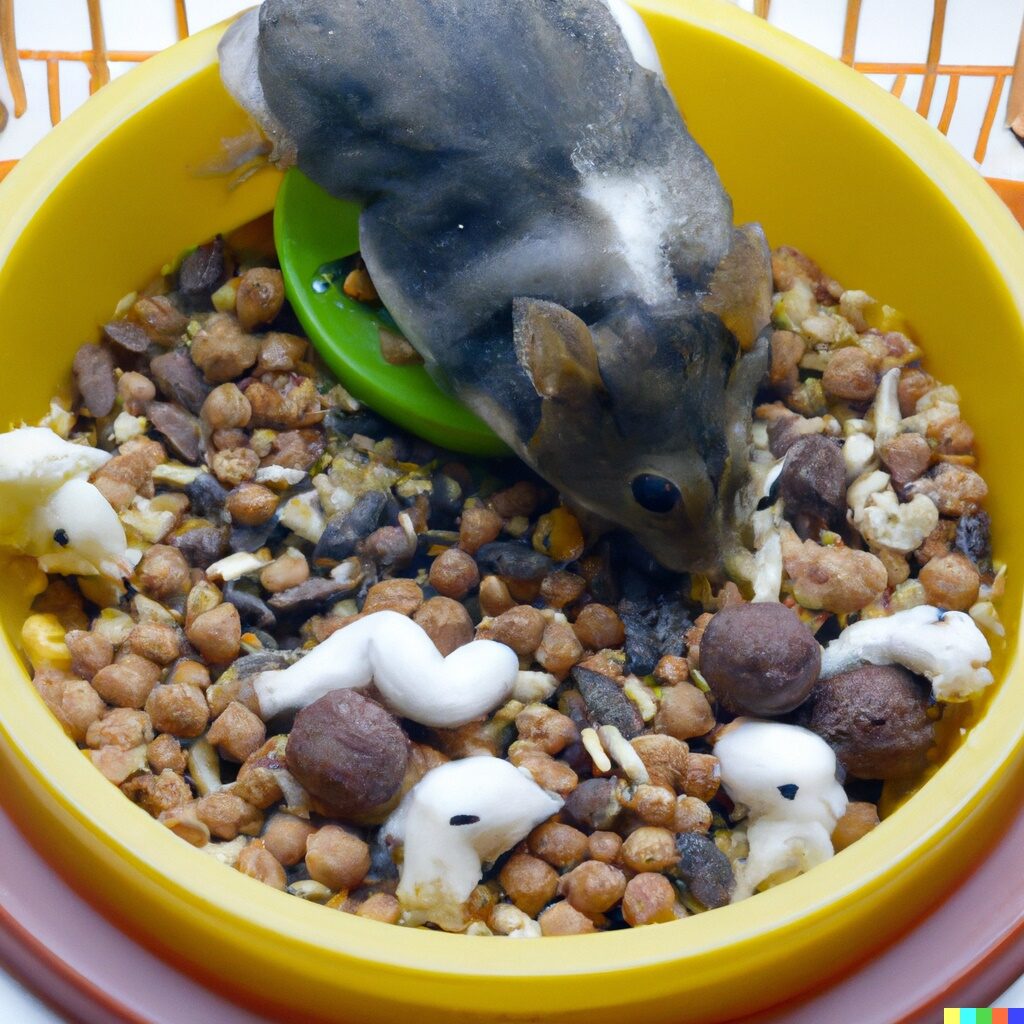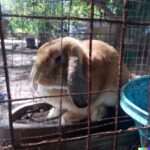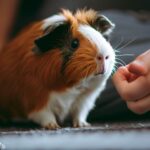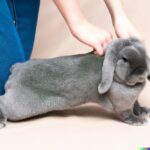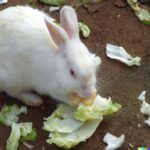Yes, mice can eat hamster food. Hamster food is an option for your pet mouse, but it comes with its own set of benefits and drawbacks. We will explore some of the potential dangers that might come with feeding your pet mouse a diet of hamster food. Read on to learn more about what experts say about this question of whether mice can eat hamster food. You may be surprised at what you discover!
The Pros and Cons of Feeding Mice Hamster Food
When it comes to feeding a pet mouse, there are numerous foods available on the market. One option is to feed them hamster food, which has its advantages and disadvantages.
Pros
One of the biggest advantages of using hamster food for your mice is that it contains all the necessary nutrients they need in order to stay healthy and happy. This includes proteins, carbohydrates, vitamins, and minerals, as well as other essential elements such as fiber. Additionally, since most hamster foods come in pellet form, this makes it much easier for your mice to digest their meals compared to other types of food like seeds or vegetables, where larger pieces may cause digestive upset or blockages if not adequately chewed.
Another advantage is that you don’t have to worry about spoilage with pellets because these usually last longer than fresh produce would when stored properly. This also means less waste overall since you won’t have any old fruits or veggies leftover after each mealtime! Lastly, some brands have special formulas for Syrian hamsters, which tend to need more protein, or Dwarf hamsters, which tend to need more carbohydrates.
Cons
Despite the convenience and nutritional benefits associated with feeding your mice hamster food, there are a few drawbacks worth considering before making this choice too quickly. For starters, depending on what kind of diet you want for your pets—whether vegetarian-based or meat-based—not all varieties will meet those needs, so make sure you read labels carefully when selecting a brand or variety type! Additionally, since most pellets contain more filler ingredients than actual nutritionals from nutrient sources like grains and legumes, this could lead over time to an unbalanced diet due to the insufficient variety being consumed by them over long periods of time without appropriate rotations. Finally, some cheaper brands may contain artificial additives that could potentially harm their health, in addition to sugars added just for flavor appeal, which can increase the risk of cavities amongst them if ingested excessively throughout their respective life spans.
Nutritional Benefits of Hamster Food for Mice
Mice are small, adorable creatures that can make a great addition to any household. Despite their small size and cute exterior, mice still require the right nutrition in order to stay healthy and happy. While many people assume that hamster food is not suitable for mouse consumption, there are actually several nutritional benefits associated with this type of food.
One of the primary advantages of feeding hamster food to mice is that it often contains more protein than other types of pet foods. This higher concentration of protein helps ensure that your mouse gets all the nutrients they need while also providing them with enough energy throughout the day. Additionally, since most varieties contain plenty of fiber as well, it can help promote digestive health in your furry friend by keeping them regular and preventing constipation or diarrhea from developing.
Hamster food also usually contains vitamins A and D which help support overall good health in mice by ensuring their immune system remains strong against disease and infection. Vitamins B-12 and E are commonly included as well which further assists with maintaining a balanced diet for these little critters as each vitamin plays an important role in helping keep organs functioning properly within their bodies at all times . As you can see , although some may be hesitant about using hamster food on mice due to its origins , if chosen carefully it can offer numerous nutritional benefits when fed correctly .
Potential Health Concerns with Feeding Mice Hamster Food
The idea of feeding mice hamster food may seem strange, but it is actually a practice that has been around for many years. There are potential health concerns associated with this type of diet, however, and pet owners should be aware of them before making the decision to feed their pets this way.
The most common concern among pet owners is that mice may not get all the nutrients they need from eating only hamster food. Hamsters have different dietary needs than mice do and while some mouse-specific foods contain additional nutritional supplements to ensure that mice receive proper nutrition, these products can often be expensive or hard to find in certain areas. Additionally, there are no guarantees that these additional supplements will provide enough nutrients for a healthy diet over time.
Another potential concern when it comes to feeding your mouse hamster food is the presence of additives and preservatives in these types of products which could potentially cause digestive problems or other health issues if consumed by a mouse regularly over an extended period of time. While there are some brands on the market today which offer natural versions without any added ingredients, they may not always be available depending on where you live and can sometimes come with a hefty price tag as well.
Alternatives to Consider when Deciding What to Feed Your Mouse
Deciding what to feed your pet mouse can be a tricky decision. Many owners are unaware of the variety of food options available, and may simply resort to the same old bought pet pellets or seeds. However, there is a wide range of alternative foods that can provide your mouse with an interesting and varied diet.
A great way to keep your mouse’s palate interested is through fresh vegetables like broccoli and carrots. Not only do these contain essential vitamins and minerals, but they also serve as fun enrichment activities for your mouse, providing them with something new to explore every day! Additionally some fruits such as apples or grapes make excellent treats! It’s important though not to overdo it on sugary snacks – too much sugar could lead to obesity in mice just like humans!
Another nutritious option includes cooked grains like quinoa or wheat germ which are both highly digestible sources of protein that will give your little friend loads of energy throughout the day. You can mix these in with their regular food for extra fiber content or create homemade mixtures containing different nuts, peas and beans for added nutrients – this will help avoid any nutritional deficiencies if you find yourself stuck for ideas about what else you can give them other than store-bought pellets or seed mixes. Just remember not all foods are suitable for rodents so it’s best always check first before feeding anything new .
Recommended Diet Plans for Pet Mice
Mice are social, intelligent, and playful creatures that can make excellent pets. They require a balanced diet to stay healthy and active. Just like humans, mice need variety in their diets to ensure they’re getting the proper nutrition. Here is a guide on what makes up an ideal diet plan for pet mice:
Pellets
The main part of your pet mouse’s diet should be pellets. Look for high-quality brands that don’t have any added sugar or artificial ingredients, since these don’t have any nutritional value. A small handful per day is enough since pellets have concentrated amounts of nutrients; too much could lead to obesity.
Fruits & Vegetables
Fruits and vegetables are important parts of a pet mouse’s diet because they are full of vitamins, minerals, antioxidants, and fiber that are good for the mouse’s health as a whole. Offer about one tablespoon per day, broken into several pieces; some popular choices include apples, carrots, celery stalks, and spinach leaves (all thoroughly washed). You may also want to try different types each week so your pet doesn’t get bored eating the same thing every day!
FAQS.
What should you not feed mice?
Mice should not be fed human food such as chips, chocolate, or candy. Foods high in fat and sugar can cause health problems for mice. Additionally, they should not be given too much dairy or grain-based products since these can also cause digestive issues. Fresh fruits and vegetables are a better option for their diet; things like carrots, apples, broccoli, kale, and spinach are all good choices.
Is gerbil food OK for mice?
No, gerbil food is not appropriate for mice. Although they are both small rodents, their nutritional needs differ and the ingredients in gerbil food may not have the right balance of nutrients for a mouse’s health. It is best to provide your pet mouse with specially formulated mouse food that contains the correct amounts of vitamins, minerals and other essential components to keep them healthy.
What should I feed my mouse?
Mice require a diet of fresh vegetables, grains and small amounts of protein and fat. You can purchase specialized mouse food from your local pet store, or you can make your own mix at home with high-quality ingredients like oats, wheat germ, ground flaxseed, sunflower seeds and other nutritious items. Make sure to give your mouse plenty of fresh water every day too!
How long can a mouse live without food?
A mouse can survive up to four weeks without food, depending on its size and the environmental conditions. However, it is not advised to deprive a mouse of food for long periods of time as this will cause it stress and may lead to early death.
How many times a day do you feed a mouse?
Mice should be fed once a day with a small amount of food, usually enough for them to consume in one sitting. Water should also be available at all times. It can help to provide multiple sources of water since mice tend to prefer moving water and so providing both static and running water can encourage drinking.
What do mice eat daily?
Mice are omnivorous, meaning they eat both plants and animals. Their diet typically consists of seeds, fruits, grains, nuts, insects and even small vertebrates like frogs or fish. They also need a source of water to survive. Mice often scavenge for food items in the wild or find them around human dwellings – think kitchen scraps! They have high metabolisms so it’s important they get enough calories each day to keep up their energy levels.
What attracts mice to your house?
Mice are drawn to yards and homes that offer food, water, and shelter. Sources of food can be anything from pet food left out overnight to crumbs on the counter or even bird seed in your yard. Water sources could include a dripping faucet, an open dishwasher, or a pet’s water bowl. Shelter is often found in cluttered garages where they can find cardboard boxes or piles of fabric to make nests. Even small cracks around windowsills and door frames may provide enough space for them to squeeze through and get inside your home.
